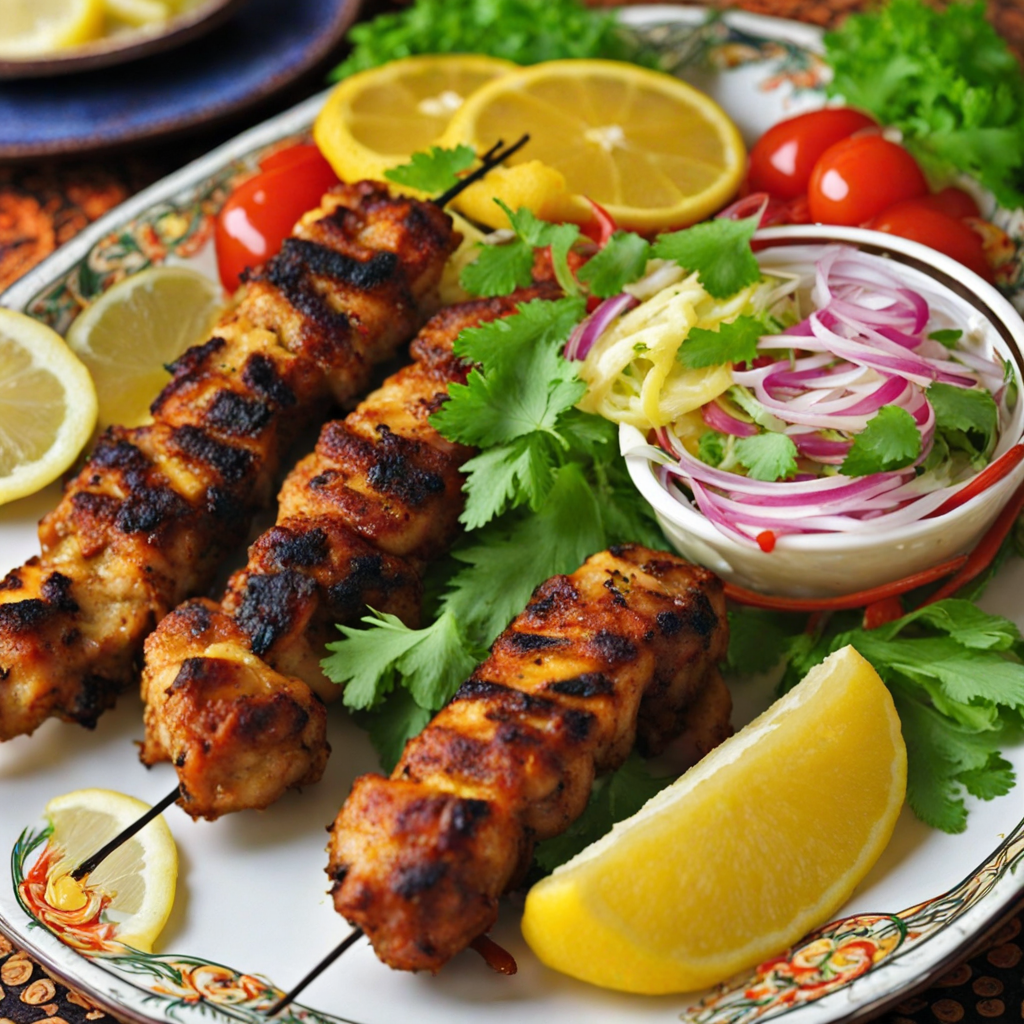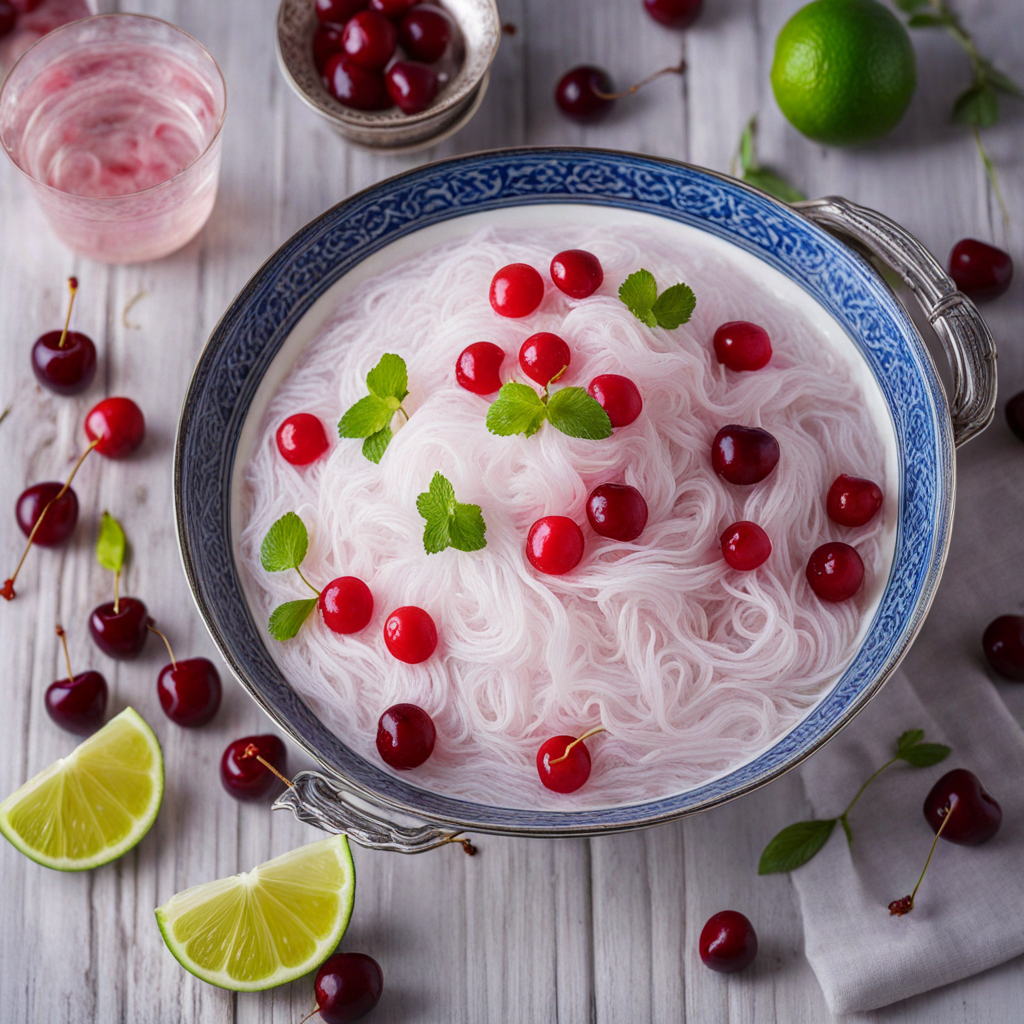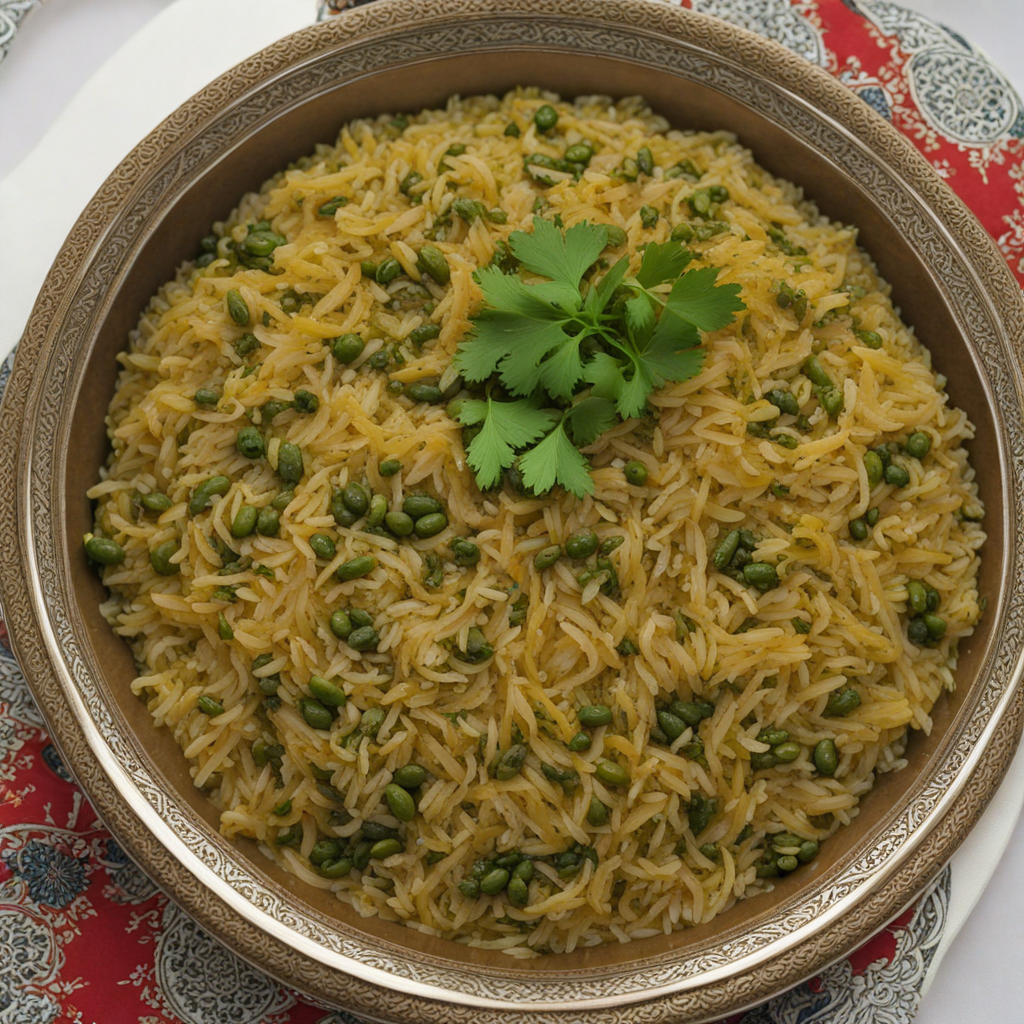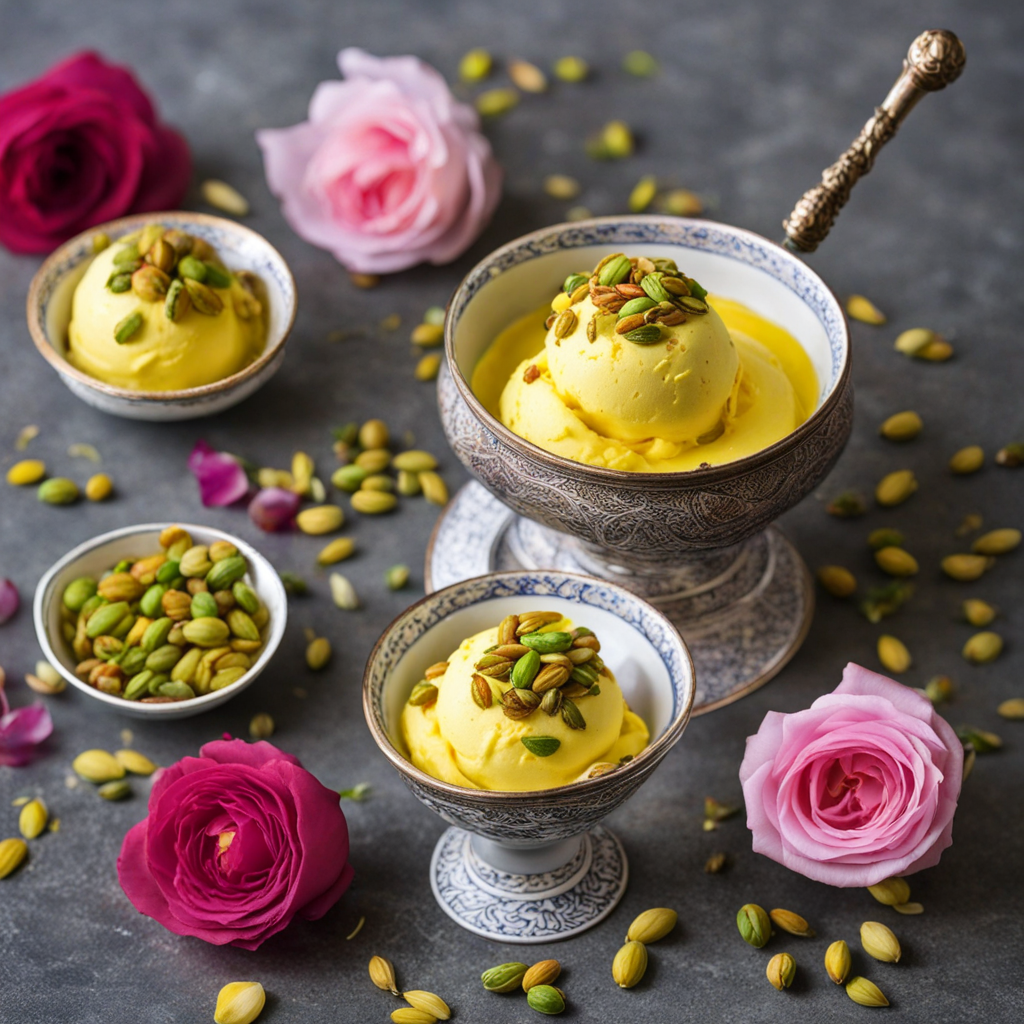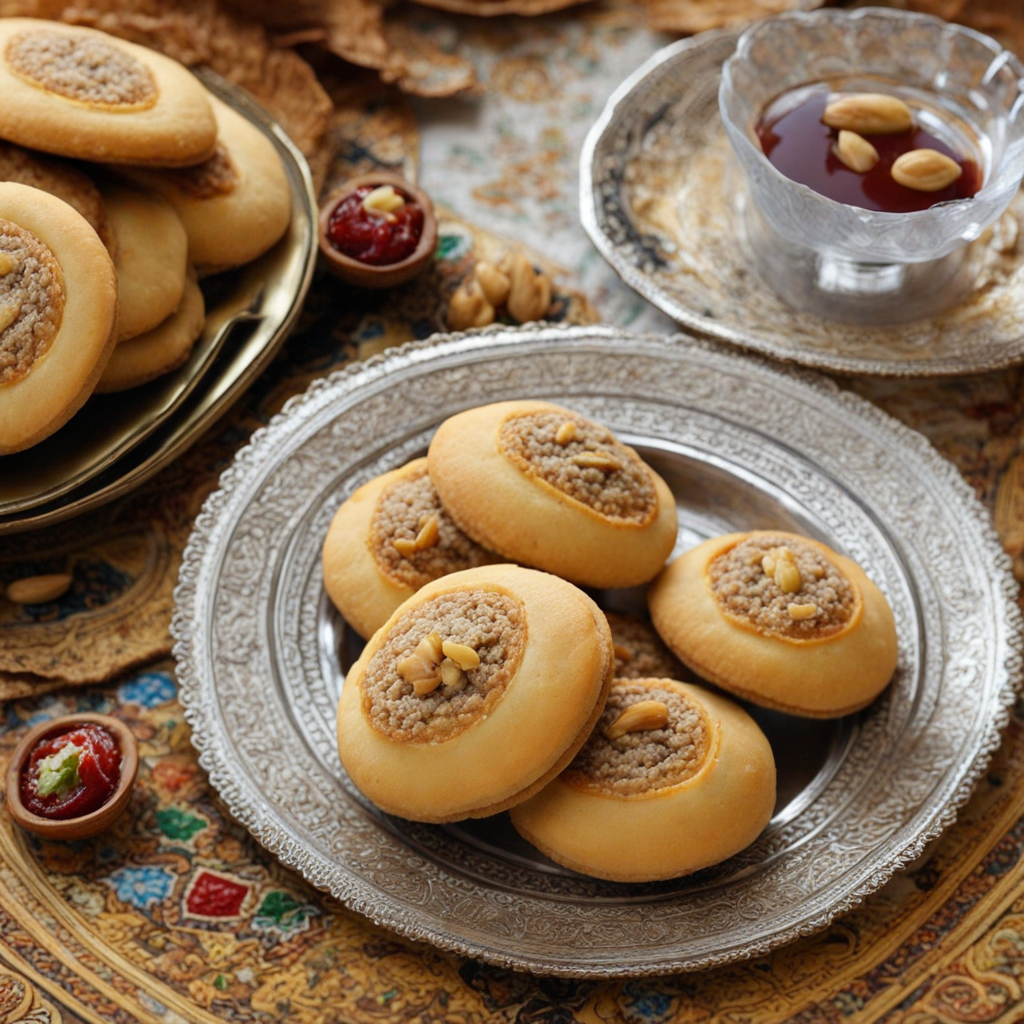Joojeh Kebab
Joojeh Kebab is a traditional Iranian dish that showcases the beauty of marinated grilled chicken, often served with fluffy saffron rice. The chicken is typically cut into tender pieces and marinated in a mixture of yogurt, lemon juice, and aromatic spices, including saffron, turmeric, and sometimes a hint of garlic. This marinade not only imparts a delightful tanginess but also helps to tenderize the meat, allowing it to absorb the rich flavors. The result is a succulent, juicy kebab that bursts with a harmonious blend of taste, making it a favorite among both locals and visitors alike. Once marinated, the chicken pieces are skewered and grilled to perfection over an open flame. This grilling process caramelizes the exterior, creating a tantalizing char that enhances the dish's overall flavor profile. The smoky aroma wafting from the grill is irresistible, promising a satisfying meal that is as visually appealing as it is delicious. Joojeh Kebab is often served with grilled tomatoes and bell peppers, which add a fresh and vibrant element to the dish, perfectly complementing the savory chicken. To enjoy Joojeh Kebab authentically, it is typically accompanied by fragrant saffron-infused basmati rice, known as "chelow." This rice is fluffy and light, providing a wonderful contrast to the rich flavors of the kebab. In some regions, it may also be served with a side of fresh herbs, such as mint and basil, along with a zesty salad or yogurt sauce to add a refreshing touch. The combination of textures and flavors in Joojeh Kebab makes it a delightful culinary experience that transports you to the heart of Iranian cuisine.
How It Became This Dish
Origins of Joojeh Kabab Joojeh Kabab, also known as Persian chicken kebab, traces its roots back to the ancient culinary traditions of Iran. The word "joojeh" translates to "young chicken" in Persian, while "kabab" denotes grilled meat. This dish has its origins in the nomadic lifestyles of ancient Persian tribes who would roast meat over open flames, a method that has evolved into the sophisticated grilling techniques of today. The use of fire and skewers symbolizes the connection between the earth and the heavens, with the smoke representing a bridge to the divine. The earliest records of kebabs can be found in Persian literature and historical texts, suggesting that the practice of grilling meat has been a part of Iranian culture for millennia. The concept of marinating meat before grilling is also believed to have originated in Persia, with the use of yogurt and spices being a common method to tenderize and flavor the meat. This practice laid the groundwork for Joojeh Kabab, which is typically marinated in a mixture of yogurt, saffron, lemon juice, and various spices before being grilled to perfection. \n\n Cultural Significance Joojeh Kabab holds a revered place in Iranian cuisine and culture. It is often a centerpiece at family gatherings, festive occasions, and celebrations such as Nowruz, the Persian New Year. The dish not only represents the culinary heritage of Iran but also embodies the spirit of hospitality that is deeply ingrained in Iranian culture. Serving Joojeh Kabab to guests is seen as a gesture of warmth and welcome, showcasing the host's culinary skills and generosity. In addition to its role in social gatherings, Joojeh Kabab also reflects the agricultural richness of Iran. The country's diverse climate allows for the cultivation of various herbs and spices, which are integral to the dish. Ingredients such as saffron, a prized Persian spice, elevate Joojeh Kabab to a level of culinary sophistication. The dish also emphasizes the importance of fresh, quality ingredients, a principle that is upheld in Iranian cooking. \n\n Regional Variations While Joojeh Kabab is a staple throughout Iran, regional variations exist that reflect the local flavors and culinary practices. For instance, in the northern regions of Iran, where fresh herbs are abundant, you might find Joojeh Kabab being prepared with an array of green herbs, enhancing the flavor profile of the dish. In contrast, in southern Iran, the kebabs may be spiced more heavily, with the addition of local spices that give them a unique twist. The city of Isfahan is particularly renowned for its Joojeh Kabab, often served alongside fragrant saffron rice and grilled tomatoes. In Tehran, street vendors offer this beloved dish, making it accessible to all. The vibrant food markets in Iran buzz with the aroma of grilled meats, where Joojeh Kabab stands out as a favorite among locals and tourists alike. \n\n Modern Development In recent years, Joojeh Kabab has gained international recognition, finding its way onto menus of Persian restaurants worldwide. This globalization of the dish has introduced it to a broader audience while allowing for culinary experimentation. Chefs outside Iran have started to incorporate elements from their own culinary traditions, creating fusion dishes that combine Joojeh Kabab with various international flavors. Despite these adaptations, traditional methods of preparing Joojeh Kabab remain cherished by many Iranian families. The dish is often made during family barbecues, where the grilling becomes a communal activity, further strengthening familial bonds. Many Iranians take pride in preserving their culinary heritage, passing down recipes through generations while still embracing modern cooking techniques. \n\n Health Aspects Aside from its cultural and historical significance, Joojeh Kabab is also notable for its health benefits. Made primarily from chicken, which is a lean source of protein, it provides a nutritious meal option. The marinade, typically consisting of yogurt, lemon, and spices, not only enhances the flavor but also adds healthful components. Yogurt is known for its probiotic properties, while lemon juice provides vitamin C and aids digestion. The inclusion of fresh vegetables, such as tomatoes and bell peppers, which are often grilled alongside the kabab, adds vital nutrients and fiber to the meal. The dish is frequently served with rice, particularly saffron-infused Persian rice, which adds to its overall nutritional value. The balance of protein, carbohydrates, and healthy fats makes Joojeh Kabab a wholesome choice for those seeking a satisfying yet healthy meal. \n\n Joojeh Kabab Today Today, Joojeh Kabab continues to be a beloved dish among Iranians and food enthusiasts alike. It symbolizes not just a meal but an experience — from the marination process to the act of grilling, and finally to the enjoyment of sharing it with others. Many Iranians take pride in mastering the perfect Joojeh Kabab, and cooking it has become an art form. In the age of social media, Joojeh Kabab has found a new platform for appreciation. Food bloggers and culinary influencers showcase their versions of the dish, often highlighting the importance of using fresh ingredients and traditional methods. This has helped to rekindle interest in Persian cuisine and promote cultural awareness, allowing people from diverse backgrounds to appreciate the flavors and stories behind Joojeh Kabab. \n\n In conclusion, Joojeh Kabab is more than just a dish; it is a culinary treasure that encapsulates the rich history and vibrant culture of Iran. Its origins, cultural significance, and evolution over time reflect the essence of Persian hospitality, the importance of family and community, and the enduring passion for food that transcends borders. Whether enjoyed in a traditional Iranian setting or as a modern fusion dish, Joojeh Kabab continues to captivate palates and hearts around the world.
You may like
Discover local flavors from Iran


